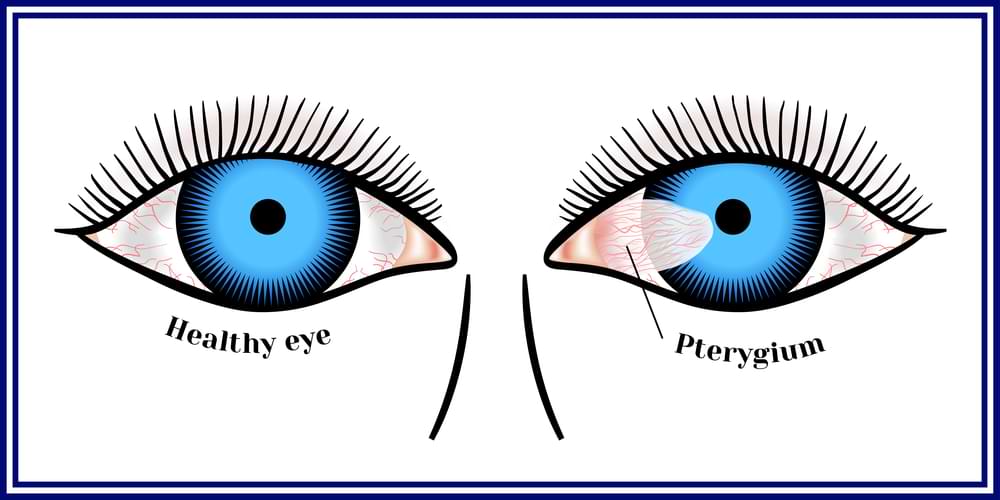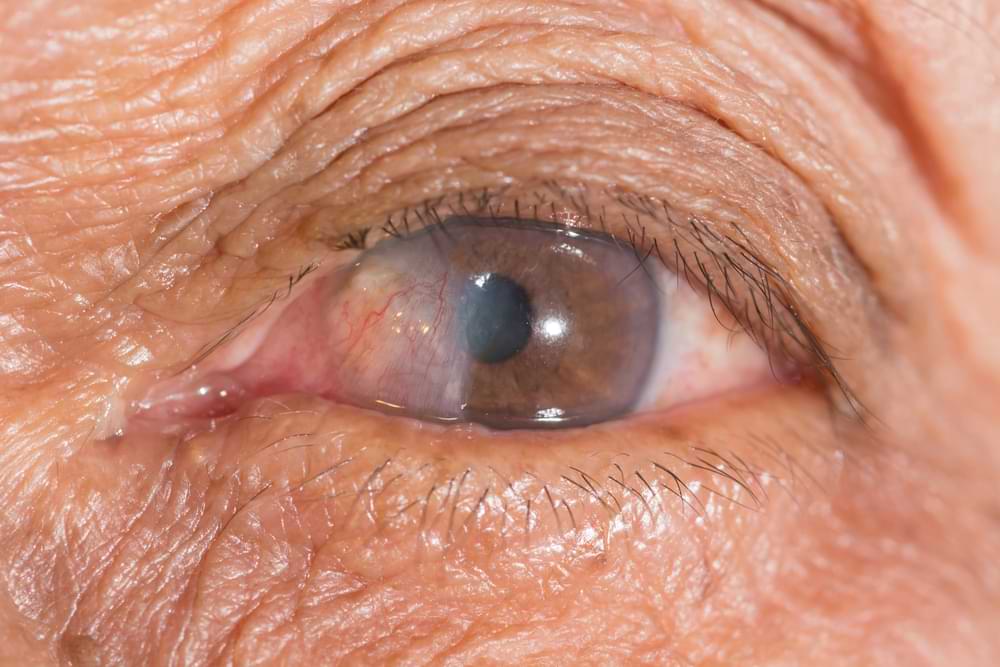Could that strange growth on your eye be more than just a minor annoyance? You may have a benign growth, something called pterygium (a.k.a. “surfers eye”) that is a response to UV exposure.
Contrary to common belief, the condition doesn’t always go away on it’s own, and patients often need pterygium treatment. Furthermore, it’s a myth that only the elderly are at risk for developing pterygium. People of all ages can get these growths, particularly if they are active outdoors.
I’m Nandita Chowdhury, the principal optometrist at Picton Eyecare. With over 15 years of experience, I am passionate about helping our Wollondilly community maintain optimal eye health. At our practice, we use advanced diagnostic tools to ensure we provide the best care possible. As a local resident, I understand the unique needs of our patients, especially those who are often outdoors. Let’s explore how we can protect your eyes and address any concerns you might have about pterygium.
Early detection of vision issues can save you from future discomfort and eyesight problems. Ensure your eyes are in good health by scheduling an appointment at Picton Eyecare now. And if you’re just curious to learn more about pterygium, keep reading to discover more valuable insights.
KEY TAKEAWAYS
- Pterygium is a common, non-cancerous growth caused by UV exposure, often affecting outdoor enthusiasts.
- Early detection and treatment can prevent serious vision issues and discomfort.
- Protecting your eyes with UV-protective measures and regular eye exams are important for maintaining long-term eye health.

What is Pterygium?
Definition and Description
What exactly is pterygium? Pterygium (pronounced “ter-ee-jee-um”) is a condition characterized by a fleshy, triangular growth on the conjunctiva, the clear tissue covering the white part of your eye. It’s commonly referred to as Surfer’s Eye due to its prevalence among individuals who spend significant time outdoors, particularly in sunny and windy environments. About one in every 100 Australians develops a pterygium (the plural for pterygium is pterygia).
Symptoms and Signs
The symptoms of pterygium can be quite bothersome. You might experience redness, irritation, and a persistent itching sensation in your eye. Many describe it as feeling like there’s a foreign body in the eye, which can lead to discomfort and visual blurring.
Fleshy, Triangular Growth
The growth itself usually starts at the inner corner of the eye and can extend across the cornea. This can interfere with vision if it grows large enough, causing significant issues if not treated promptly.
Causes of Pterygium
Environmental Factors
Why does pterygium occur? One of the primary environmental factors is excessive exposure to UV light. People who spend a lot of time outdoors without adequate eye protection are at a higher risk. The sun’s UV rays can cause changes in the eye tissues, leading to the development of this growth.
Windy and dusty conditions also play a significant role. These elements can irritate the eyes, prompting the growth of pterygium as a protective response. This is why you often see it in individuals who work or engage in activities in such environments.
Lifestyle Risk Factors
Your lifestyle can significantly impact the likelihood of developing pterygium. Outdoor activities and occupations, such as farming, fishing, or construction, increase exposure to harmful UV rays and environmental irritants.
Geographically, pterygium is more common in regions with high levels of UV radiation. People living closer to the equator or in sunny climates, like Australia, are more susceptible.
Diagnosing Pterygium
Clinical Examination
The diagnosis typically begins with a clinical examination by an optometrist. During this exam, a slit lamp is used to closely inspect the eye’s structures, allowing for a detailed view of the pterygium.
Visual Acuity Tests
Additionally, visual acuity tests are performed to determine if the growth is affecting your vision. These tests measure the clarity and sharpness of your eyesight, helping to assess the impact of the pterygium on your daily activities.
Pterygium Treatment
Non-Surgical Treatment
How can pterygium be treated? For many, non-surgical options are the first line of defence. Lubricant eye drops and artificial tears can help alleviate dryness and irritation. These drops provide moisture, soothing the eye and reducing discomfort. In some cases, steroid eye drops are prescribed to decrease inflammation, making the growth less noticeable and uncomfortable.
Surgical Treatment
If non-surgical methods are insufficient, surgical options are available. One common procedure is the simple removal of the pterygium. This involves excising the growth from the eye. In more advanced cases, amniotic membrane transplantation might be recommended. This technique involves placing a layer of amniotic membrane over the affected area to promote healing and reduce recurrence.
Another effective method is conjunctival autograft surgery, where tissue from another part of your conjunctiva is used to cover the area where the pterygium was removed, further lowering the risk of it returning.
Deciding on the right treatment depends on the severity of the condition and how much it impacts your vision and comfort. Consulting with an experienced optometrist will help determine the most appropriate course of action.
Post-Surgery Care and Management
Immediate Post-Surgery Care
What happens after pterygium surgery? Immediately following the procedure, it’s crucial to protect the eye to ensure proper healing. An eye patch is often used to cover the operated eye, shielding it from light and potential irritants. Additionally, steroid eye drops are commonly prescribed to reduce inflammation and prevent infection, promoting a smooth recovery process.
Long-Term Management
Long-term care is equally important. Regular follow-up appointments with your optometrist will monitor the healing progress and check for any signs of recurrence. Continued use of artificial tears may be recommended to keep the eye moist and comfortable. Staying vigilant and maintaining these follow-ups can help prevent any complications and ensure lasting results.
Preventing Pterygium
Protective Measures
How can you prevent pterygium? One of the most effective strategies is wearing UV-protective sunglasses. These glasses block harmful UV rays, reducing the risk of pterygium development. Additionally, using wide-brimmed hats provides extra protection by shielding your eyes from direct sunlight.
Environmental Adjustments
Avoiding environments with excessive dust and wind can also help. If you live or work in such conditions, taking steps to reduce exposure is crucial. Using artificial tears in dry climates can keep your eyes moist and less susceptible to irritation.
Potential Complications of Pterygium Treatment
Risks of Untreated Pterygium
What are the risks if pterygium is left untreated? One significant concern is vision impairment caused by corneal scarring. As the growth advances, it can distort the cornea, leading to astigmatism, which blurs vision. This can significantly affect your daily activities and overall quality of life.
Surgical Risks and Complications
Even with treatment, there are potential complications. Recurrence of pterygium is a possibility, where the growth returns even after surgical removal. Additionally, there are risks associated with surgery itself, such as infection and cyst formation. These complications underline the importance of careful post-surgical care and regular follow-up appointments with your optometrist.
Pterygium vs. Pinguecula
Differences in Appearance
Pinguecula (pronounced “ping-gwek-kyu-la”) is a raised, yellowish growth that typically forms on the conjunctiva but does not grow onto the cornea. It is generally smaller and less noticeable than pterygium. How can you tell pterygium apart from pinguecula? While both are growths on the eye, they have distinct characteristics. Pterygium is a fleshy, vascular growth that starts on the conjunctiva and can extend onto the cornea. It often appears pinkish and can be quite prominent.
Differences in Impact
The impact of these conditions on vision also differs. Pterygium can affect vision if it grows large enough to distort the cornea, leading to issues such as astigmatism or vision obstruction. This makes it more problematic and often necessitates treatment to prevent further complications. On the other hand, pinguecula is usually benign and symptomless, rarely causing any significant discomfort or vision problems.
Understanding these differences is essential for appropriate diagnosis and treatment, ensuring that each condition is managed effectively based on its unique characteristics and potential impact on eye health.
If you would like to learn more about the signs, symptoms and treatment of these two eye conditions, watch the following video by Dr Joseph Allen.
Importance of Early Detection
Benefits of Early Intervention
Catching this condition early can prevent serious complications. Early intervention helps in managing symptoms effectively, reducing discomfort and preventing the growth from advancing to a stage where it might impair vision. By addressing pterygium early, you can avoid the need for more invasive treatments.
Regular Eye Exams
Scheduled eye examinations play a vital role in early detection. Routine check-ups with your optometrist can identify pterygium in its initial stages, even before noticeable symptoms appear. This proactive approach allows for timely management and ensures your eyes remain healthy.
Scheduling regular eye exams and paying attention to any changes in your eye health can significantly benefit your overall well-being and vision.
CONCLUSION
Pterygium, also known as Surfer’s Eye, is a non-cancerous growth on the eye caused by prolonged UV exposure and environmental factors. Pterygium treatment options range from non-surgical methods like lubricant eye drops to surgical procedures for severe cases.
Overlooking early signs of pterygium may lead to more complex and costly treatments in the future. Without timely intervention, pterygium can cause corneal scarring and astigmatism, severely affecting your vision.
Your eye health is too important to delay—schedule an appointment with Picton Eyecare and get the care you need.
You can call us on (02) 4603 2309 or arrange an appointment using the “Book Now” button in the website menu. We are conveniently located in the heart of Picton, NSW. There is plenty of parking available at the back of our store.

B.Optom (UoA), PGOT (UNSW)
Nandita is the principal optometrist of Picton Eyecare. She has over 15 years of extensive experience working in corporate and independent optometry practice. Opening Picton Eyecare in 2022 has fulfilled Nandita’s dream of an independent optometry practice, committed in serving the local community of Wollondilly and surrounding areas.
Nandita is caring and passionate about providing professional, personal and customised solution for every patient. She takes interest in all her patients and employs her skills and expertise to achieve the best possible outcome for the patient. She maintains great relationships with other medical professionals in the area.
Nandita is a local resident and has been working in the Southern Highlands for many years. She has a loyal following of patients who value her clinical and interpersonal relationships.
When not at work Nandita loves spending time with her family.
